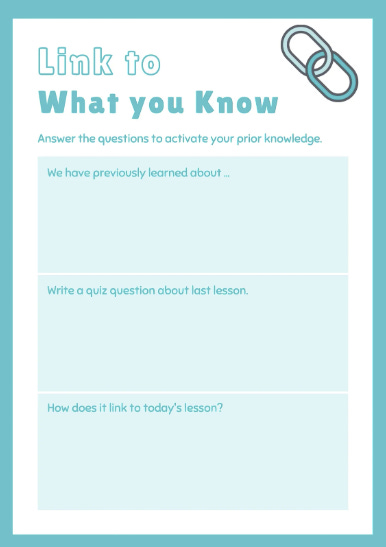3 Steps to Activate Prior Knowledge
A quick routine to help students connect past learning to new concepts.
If your students struggle to access or apply previous skills in new lessons, even though you’ve reviewed them consistently, this audio training is for you.
In this short training, I walk you through a practical, low-prep way to activate prior knowledge using a 3-step process that creates meaning and helps students access relevant skills.
It’s simple. It takes 2–3 minutes. And it helps students connect what they already know to what they’re about to learn so you’re not reteaching from scratch.
In this episode, I cover:
✅ Why activating prior knowledge before concept instruction matters
✅ A clear 3-step process you can use in any subject
✅ Real wording examples and how it fits within explicit instruction
✅ Why this step is more than just a warm-up. How it builds clarity and connection
I’ve also added a free printable below as a prompt that you can use and apply straight into your next lesson 👇🏼
🖨️ Download the free template: Link to What You Know
Link to What You Know: Activating Prior Knowledge
This tool helps students recall, activate, and connect learning. It sets them up for success from the very start.
🔊 Press play to learn how to apply this simple 3-step process.
This episode is short, focused, and designed to support you in real time. Straight to the point.
💡 Want more support like this?
If you found this helpful, it’s just a taste of what’s inside the Structured Teaching Portal: A Lesson Planning & Delivery Hub for Explicit Teaching. My all-in-one hub packed with practical strategies, templates, resources and video trainings that make explicit instruction easier to plan and deliver. Contact me viad the details below for more info.
📬 Connect with me
📸 Instagram: @brolgaeducation
📧 Email: trudy.mayo@brolgaeducation.au
💬 DM: Send me TEACH on Instagram or Substack and I’ll send you the details


